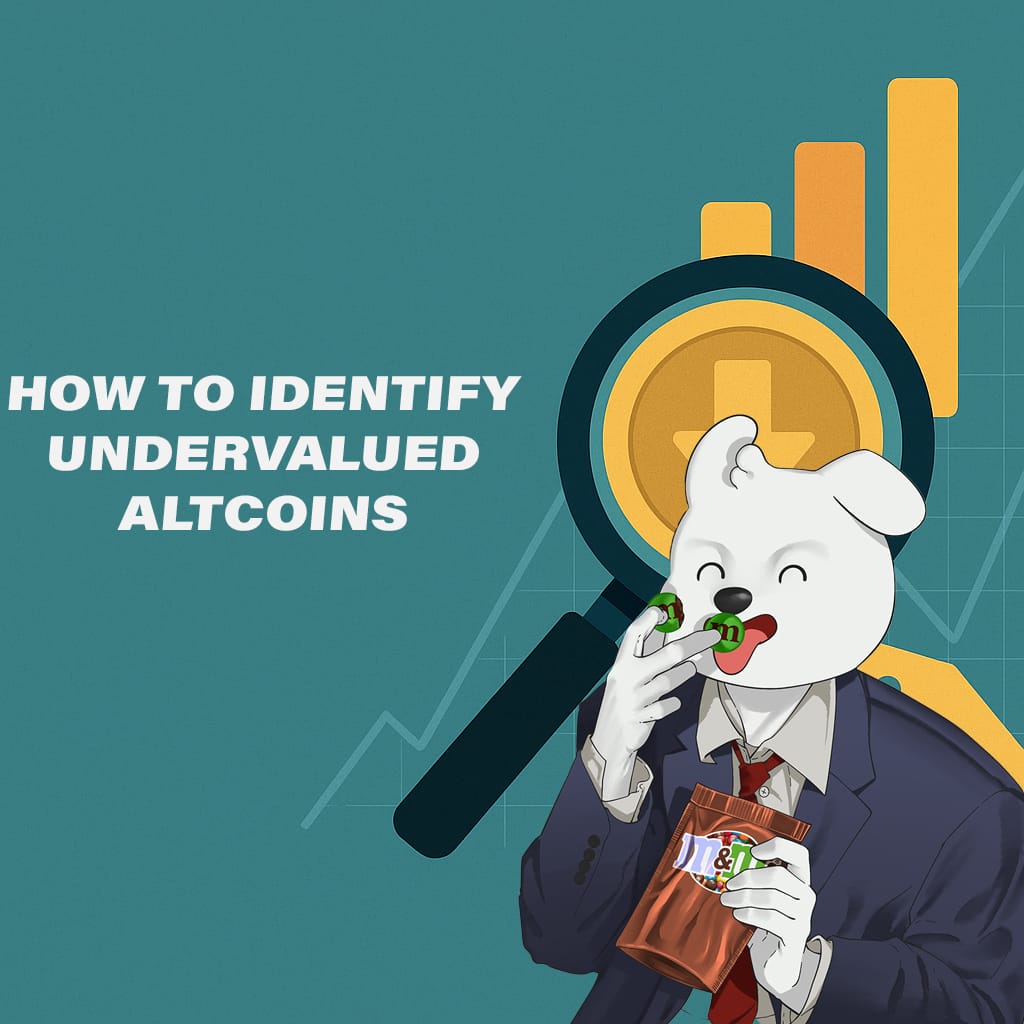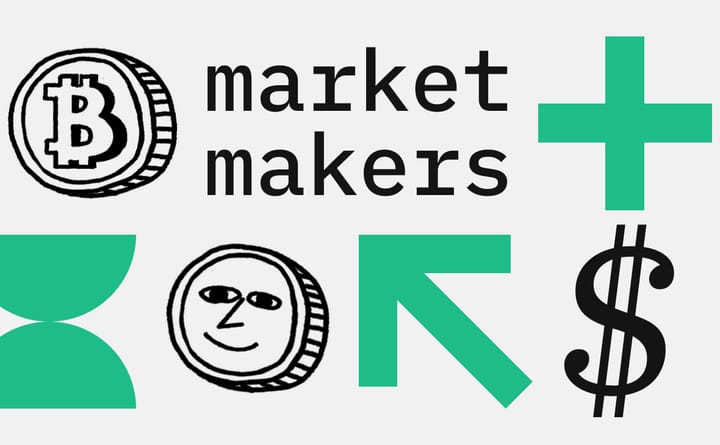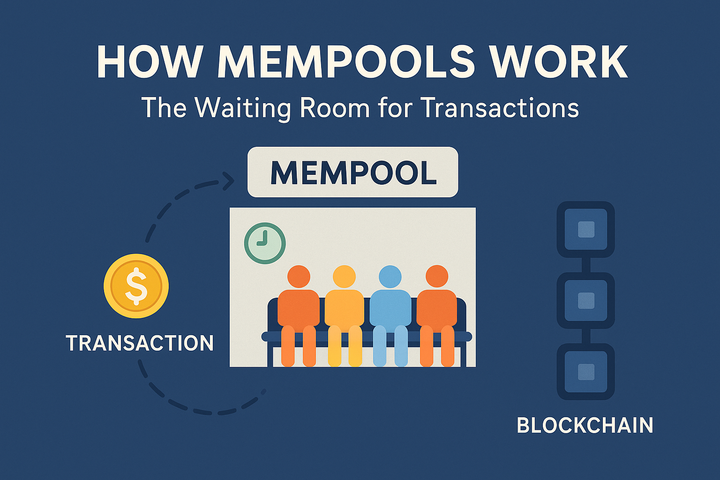The Secret to Successful Crypto Investing: Identifying Undervalued Altcoins

In a crypto market full of hype, it’s easy to chase the latest trending coin or the next “100x” promise. But seasoned investors know that the real opportunity lies in identifying undervalued altcoins—projects with strong fundamentals, real utility, and growth potential that the market hasn’t fully recognized yet.
These are the hidden gems. And if you can spot them early, the upside can be significant.
In this guide, we’ll break down how to find those hidden opportunities using a mix of fundamental research, on-chain data, market indicators, and community sentiment—without relying on hype or guesswork.
1. Look Beyond the Price: Fundamental Analysis
The foundation of any good investment is understanding what you're investing in. When researching altcoins, start by asking: What problem does this project solve, and is it doing it better than others?
Key things to analyze:
- Whitepaper & Roadmap: Is there a clear vision, timeline, and purpose?
- Team & Developers: Are they experienced, doxxed, and actively building?
- Investors & Partnerships: Backing from credible VCs or industry players can be a strong sign of legitimacy.
- Real-World Use Case: Projects that offer real utility beyond speculation tend to outperform in the long run.
🔍 Pro Tip: If a project has no product, no code, and no transparency—move on.
2. Use On-Chain Data: Follow the Blockchain, Not the Hype
One of crypto’s greatest advantages is transparency. You can literally watch the activity happening on the blockchain.
Important on-chain metrics:
- Active Wallets: More active users = growing adoption.
- Transaction Volume: High usage signals demand for the platform or token.
- Developer Activity: Frequent GitHub commits or updates show the team is building, not just marketing.
- Token Distribution: Beware of centralized token ownership. A few whales holding most of the supply is a red flag.
🧠 Use tools like Glassnode, Santiment, or Token Terminal to dive deeper.
3. Market Metrics: Evaluate the Valuation
Sometimes, the token price doesn’t tell the full story. You need to look at how the market is valuing the project overall.
Metrics to pay attention to:
- Market Cap vs FDV (Fully Diluted Valuation): A massive FDV with low market cap might mean future inflation risk.
- Trading Volume: Low volume = low interest. Be cautious unless there's a good reason.
- Comparative Valuation: How does this project compare in size and activity to its direct competitors?
📊 Example: A DeFi protocol with real users and revenue but 1/10th the market cap of a similar project could be a hidden opportunity.
4. Compare With Competitors: Look for Value Gaps
A great way to find undervalued altcoins is to benchmark them against more established projects in the same niche.
Ask:
- Is this solving the same problem but with better technology?
- Is adoption growing even if price isn’t?
- Why is the market not pricing this higher—yet?
🔎 Sometimes, the market simply hasn’t caught on. That’s your opportunity.
5. Community & Sentiment: The X-Factor
A strong community is one of the most underrated factors in crypto. Projects with passionate, engaged communities often outperform—even in bear markets.
What to look for:
- Social Activity: Twitter, Reddit, Discord—are people discussing it organically?
- Google Trends: Rising search interest can be an early signal of growing attention.
- Influencer Support: While not a guarantee, positive coverage from trusted names can trigger broader adoption.
📌 Community isn’t everything, but in crypto, it often moves faster than fundamentals.
6. Tools to Help You Research Smarter
You don’t have to do everything manually. These tools can streamline your analysis:
| Tool | What it’s for |
|---|---|
| Messari | Deep project reports & market data |
| Token Terminal | Financial metrics (revenue, users, etc.) for crypto projects |
| CoinGecko / CMC | Market cap, tokenomics, historical price data |
| Glassnode | On-chain metrics (wallets, inflow/outflow, etc.) |
| DappRadar | Performance tracking of DeFi, NFT, and gaming projects |
🧩 Combine tools and cross-reference insights to reduce risk and spot trends earlier.
7. Layer-1 Blockchains: The Foundation of Many Altcoins
When looking for undervalued altcoins, it's essential to understand the different types of blockchains. Layer-1 blockchains are the foundation of many projects and have a direct impact on the scalability and adoption of altcoins built on them.
Here are some prominent Layer-1 blockchains to consider when evaluating altcoin potential:
| Blockchain Name | Consensus Mechanism | Throughput (TPS) | Key Features |
|---|---|---|---|
| Ethereum | Proof‑of‑Stake | ~30–100 | Largest smart contract ecosystem; EVM compatible |
| Solana | Proof‑of‑History + PoS | ~2,000–3,000 | Fast transactions with low fees |
| Avalanche | Avalanche (Snowman) | ~4,500 | Subnets for custom blockchains |
| Cardano | Ouroboros PoS | ~250 | Academic research-based with decentralized governance |
| NEAR Protocol | Nightshade (sharding) | ~1,000 | Dynamic sharding, developer-friendly (Rust/AssemblyScript) |
ERC-20
Ethereum is the pioneer of smart contracts and still holds the largest DApp, DeFi, and NFT ecosystems. With its transition to Proof‑of‑Stake ("The Merge"), Ethereum now has improved energy efficiency and security.
Solana
By combining Proof‑of‑History with Proof‑of‑Stake, Solana can process thousands of transactions per second at incredibly low gas fees. This scalability makes it a favorite for high-throughput DeFi and NFT projects.
Avalanche
Using the Snowman consensus mechanism, Avalanche allows for the creation of Subnets, or custom blockchains, providing flexibility for specialized use cases. It’s ideal for enterprise solutions and applications requiring a high degree of customization.
Cardano
Cardano’s Ouroboros Proof‑of‑Stake consensus algorithm is backed by peer-reviewed research and is known for its mathematical guarantees. Its on-chain governance system allows token holders to vote on protocol upgrades, ensuring community-driven development.
NEAR Protocol
NEAR’s dynamic sharding model (“Nightshade”) ensures the network can adjust its capacity based on demand. It also provides an intuitive developer experience, supporting languages like Rust and AssemblyScript for building decentralized apps.
Undervalued ≠ Cheap
Not every low-priced coin is undervalued, and not every expensive coin is overvalued. What you’re looking for is real value that hasn’t been priced in yet.
The goal is to find:
- Strong fundamentals ✔
- Real-world use ✔
- Growing adoption ✔
- Lack of market attention (yet) ✔
And that’s where the real gains are made—not by following the crowd, but by spotting potential early.



Comments ()